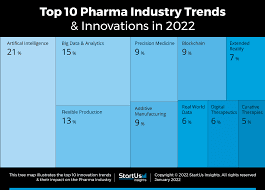Pharma Marketing Over Decades– Asrar Qureshi’s Blog Post #1079
Pharma Marketing Over Decades– Asrar Qureshi’s Blog Post #1079
Dear Colleagues! This is Asrar Qureshi’s Blog Post #1079 for Pharma Veterans. Pharma Veterans Blogs are published by Asrar Qureshi on its dedicated site https://pharmaveterans.com. Please email to pharmaveterans2017@gmail.com for publishing your contributions here.
 |
| Credit: Leeloo The First |
 |
| Credit: Mikael Blomkvist |
 |
| Credit: Timur Saglambilek |
Preamble
Pharmaceutical marketing worldwide has undergone a radical transformation over the past two decades, driven by technological advancements, regulatory changes, shifting patient expectations, and evolving healthcare dynamics. From traditional sales-driven models to digital, data-driven, and patient-centric approaches, the industry has adapted to a rapidly changing landscape.
In Pakistan, last three decades have also seen major changes, however, these are not related to technology mostly. I would keep my focus on marketing part, not other areas of pharmaceutical industry.
Shift from Sales-Driven to Value-Based Marketing
Twenty years ago, pharmaceutical marketing was largely sales-representative driven, with a focus on physician detailing, medical conferences, and direct sales visits. The emphasis was on persuading doctors to prescribe medications based on clinical data and promotional activities.
At that time, there was heavy reliance on large sales forces and in-person doctor visits. Now, there is greater emphasis on evidence-based value propositions, patient outcomes, and real-world data to justify product efficacy.
Pakistan Pharma still relies on large field forces to reach every corner of the country. A direct relationship has been established between the size of field force and the sales. The counting is done per person, that one medical representative achieves break even when he reaches sales level of 125,000 rupees. The fight is of achieving this value and then maybe adding more. But many companies keep adding medical reps to increase sales rather than building brands.
Rise of Digital and Multichannel Engagement
The early 2000s saw pharmaceutical marketing dominated by print ads, TV commercials, and in-person interactions. However, with the digital revolution, marketing has shifted towards online engagement, social media, and personalized digital content. Earlier, print media, TV ads, and face-to-face interactions were primary marketing channels, whereas now, digital tools such as search engine marketing, social media campaigns, webinars, virtual conferences, AI-driven content, and telemedicine collaborations have become essential.
Pakistan Pharma is still dependent on printed brochures and typical physician samples. Digital marketing is limited to social media handling, like announcing important hirings, events, occasions etc. For OTC products, digital advertising is common these days. Problem is that the companies do not understand judicious use of digital marketing, they are just following one another.
Growth of Direct-to-Consumer (DTC) Marketing
The U.S. and New Zealand are among the few countries that allow direct-to-consumer (DTC) pharmaceutical advertising. Over the years, there has been a dramatic increase in DTC spending, patient education campaigns, and condition-awareness initiatives. Highly targeted, personalized digital ads leveraging AI, big data, and patient behavior analytics are being used to engage patients directly.
Of course, our regulating agency stays highly conservative, and for good reason. If DTC is allowed in Pakistan, the company reps will reach patients’ homes with discount offers. Many companies ask their reps to take pictures of doctors’ prescriptions and send to their office. This is not ethical.
Patient-Centric Marketing and Empowered Consumers
Patients today are more informed, proactive, and engaged in their healthcare decisions. Pharmaceutical companies have shifted towards patient-centric marketing, focusing on education, disease awareness, and support programs. Earlier, the atients were passive recipients of information, with physicians as primary decision-makers, but now patients actively research treatments, participate in online communities, and expect transparency, real-world evidence, and holistic support services from pharma brands.
Patient awareness is universal and has happened everywhere. In Pakistan, we have the disadvantage of very low literacy rate, but even here the patients expect more information from their doctors. When they do not get it, they sometimes get agitated to the extent that unpleasant things happen.
Stricter Regulations and Compliance Challenges
Regulatory bodies everywhere have tightened advertising and promotional regulations, requiring more transparency and ethical considerations. The sunshine laws and increased scrutiny on marketing practices have changed the industry’s approach. Stricter compliance with marketing regulations, transparency in advertising, and ethical engagement with HCPs and patients is now required.
DRAP in Pakistan has also issued guidelines for pharmaceutical marketing more than once. However, due to general laxity in application of laws, no one has taken these seriously.
Aggressive Marketing Campaigns
Pharma companies in Pakistan have learnt the art of aggressive marketing very well. Their aggression goes way above and beyond reasonable boundaries. DRAP registers the products but not the indications. Even if they do so, the doctors will not accept a reduction in their freedom. The companies promote products freely and in whatever indication they think would be good commercially.
The other aggression demonstrated in marketing is the coverage of small, remote territories. There was a time when a team of 20 was considered enough for the whole country, now this number is 150-200. The companies at that time had mostly one and then two teams. Now, bigger companies have 10-12 teams each comprising of upward of 120 people. The customer visits have multiplied, and most important customers may be visited 10-15 times a month, if not more.
Personalized Marketing
Internationally, the term means that marketing messages are tailored according to the customers. In our context however, it has become synonymous with personalized services. While it is acceptable generally that the pharmaceutical companies support the medical profession in research or advocacy or patient welfare, but giving personal services is considered unethical. Our industry has crossed all such barriers and is continuously raising the bar in personal services. I shall refrain from giving examples, but the industry people know very well.
Sum Up
Pharmaceutical marketing has evolved from a product-focused, sales-driven approach to a value-driven, patient-centric, and technology-powered strategy. Companies that embrace digital transformation, leverage data analytics, and focus on transparency and engagement will thrive in the modern healthcare landscape. The next decade will likely bring greater integration of AI, real-world evidence marketing, and even more personalized healthcare solutions. Pakistan Pharma industry must rise to the occasion and modernize its ways of doing business, or run the risk of becoming obsolete.
Concluded.
Disclaimers: Pictures in these blogs are taken from free resources at Pexels, Pixabay, Unsplash, and Google. Credit is given where available. If a copyright claim is lodged, we shall remove the picture with appropriate regrets.
For most blogs, I research from several sources which are open to public. Their links are mentioned under references. There is no intent to infringe upon anyone’s copyrights. If, however, it happens unintentionally, I offer my sincere regrets.



Comments
Post a Comment